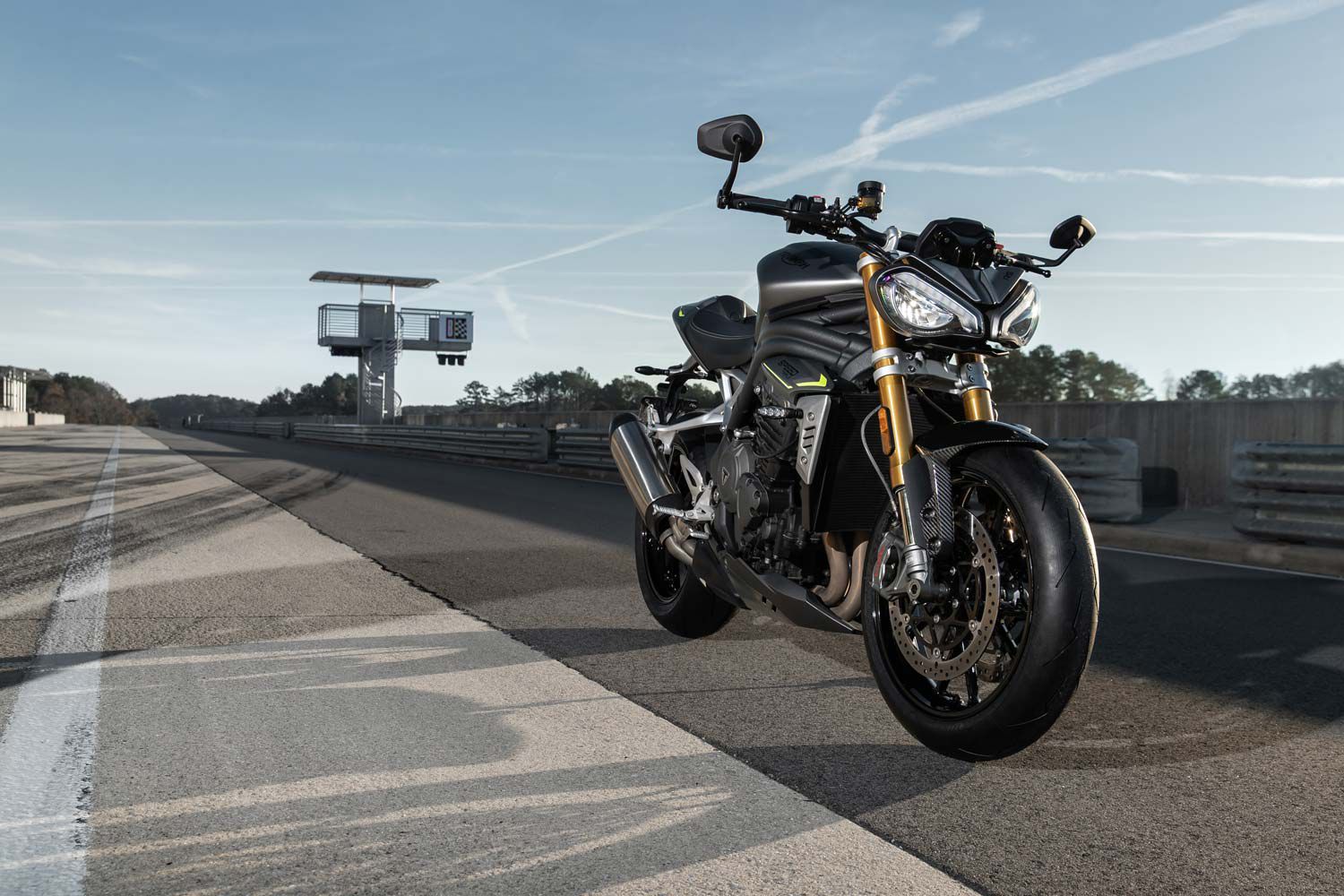
When a manufacturer introduces a new model, it’s normally a slight improvement over the current version. Power may be up a fraction, weight down perhaps a few pounds, suspension slightly tweaked, with more frame flex… But Triumph has shattered that tradition. The new Speed Triple 1200 RS has a 26 percent improved power-to-weight ratio over the now old 1050 model—that’s huge.
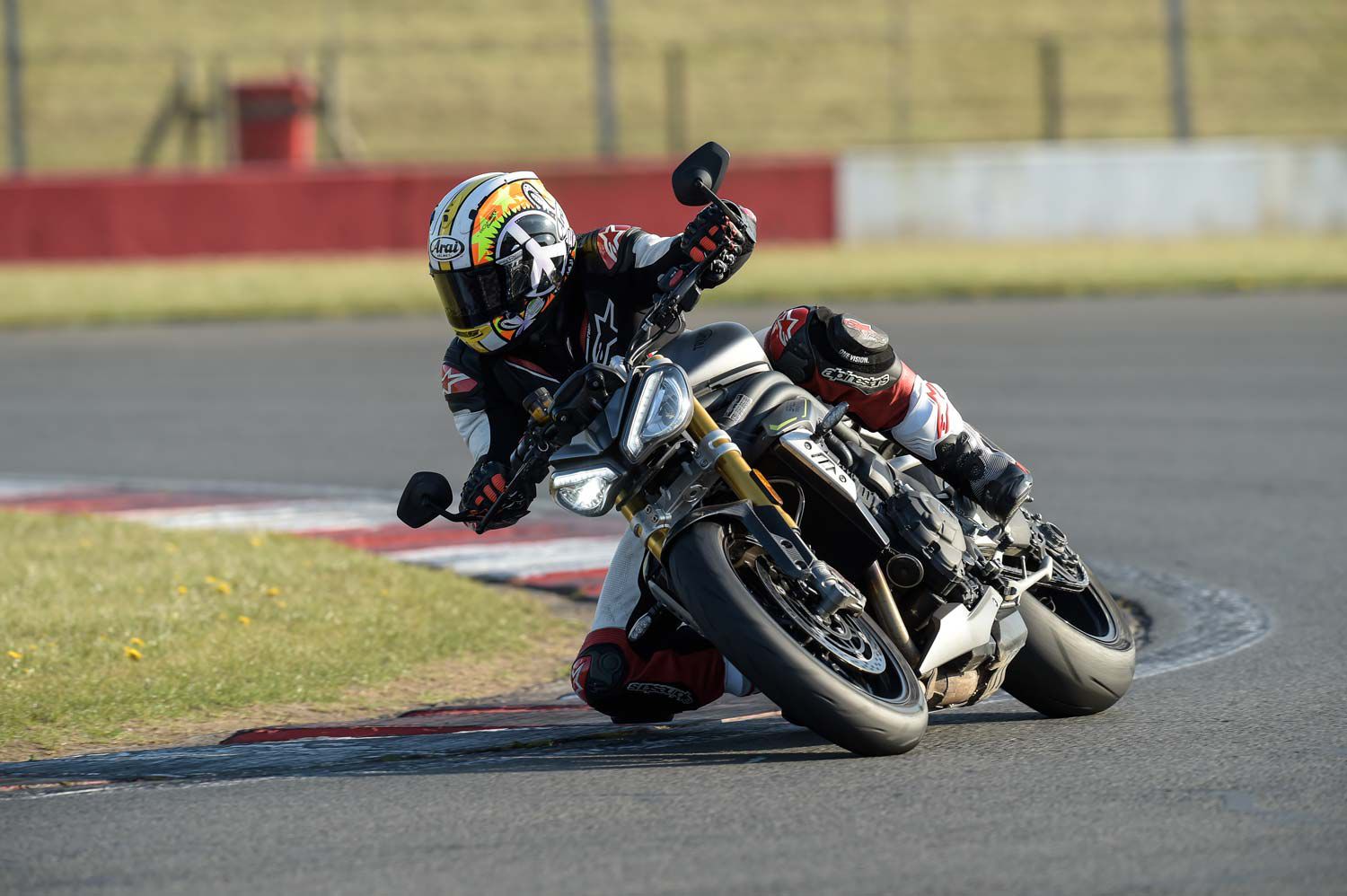
Immediately the bike feels narrower, and as soon as you flick up the sidestand you become aware of the weight reduction. The seat height has increased slightly (by 0.2 inch to 32.7 inches) but it’s slim, and I can easily get two feet down. There’s keyless ignition (and a keyless fuel cap) and when the new 5-inch TFT dash comes alive it looks very stylish, with a prominent gear position indicator and a large digital speedo surrounded by a digital rev counter. Other information is via a submenu which moves the prementioned data to the left side in a smooth operation.
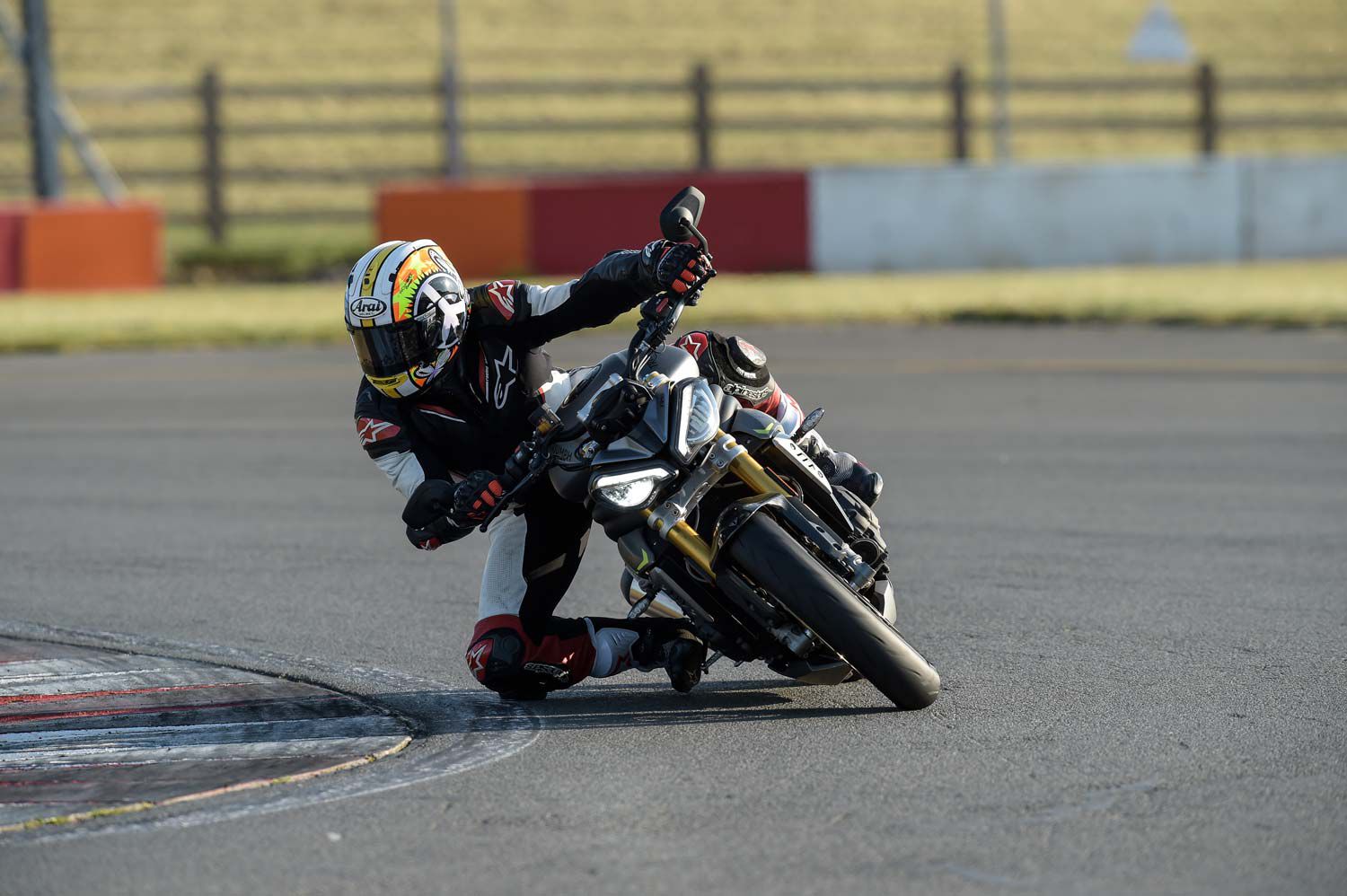
There are five riding modes to select from: Rain, Road, Sport, Track, and Ride Configurator. Each mode adjusts the throttle map, ABS, and traction control intervention. I opt for the Road mapping, then press the starter button and the British triple comes alive. The now side-slung exhaust sounds rich and fruity, and a few blips of the throttle send my senses into orbit, the revs building quickly and the triple’s soundtrack electrifying the air. Triumph has reduced the inertia of the engine, allowing the revs to build faster, and I can feel the difference already. It’s like running in muddy boots then swapping them for light trainers.
Immediately you notice the new bike’s relative weightlessness along with its narrowness. The pegs are closer together—the bike really is slimmer—which not only promotes the sense of lightness but also increases ground clearance. The new gearbox, combined with the new Triumph Assist up-and-down quickshifter, makes gear changes effortless. Shifts are super smooth, with the fueling in Road mode equally creamy.
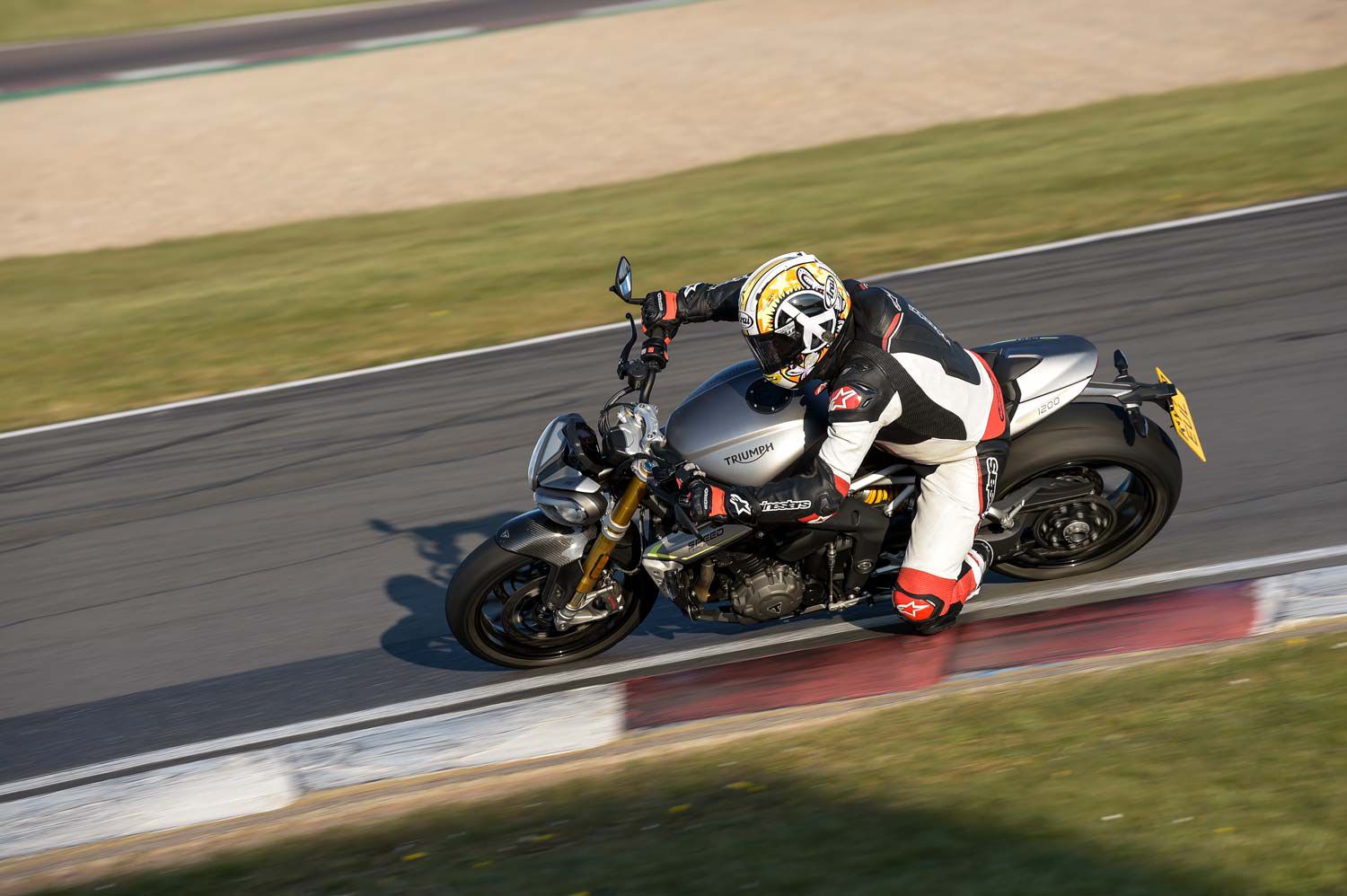
Low down torque below 6,000 rpm is comparable to the old model. It’s after 6,000 rpm where the real difference is. The older 1050 has a lovely spread of low to midrange grunt, but now you get that extra injection when you open up the taps. The 2021 1,160cc model will rev to 11,150 rpm, compared to 10,500 rpm of the old bike. On the road, you rarely get to use full throttle, but on the odd occasion I did, the new Speed Triple RS gave me a taste of what was to come on track.
The initial test ride was on fast and relatively smooth open roads, and the steering was accurate with sporty Metzeler Racetec RR tires giving a huge amount of confidence in the warm conditions. The Öhlins fully adjustable TTX 36 rear shock felt reassuring, but possibly not as plush as the old bike’s shock. The feel is excellent, and with so much grip developed by the new chassis and longer swingarm (74mm, or 2.9 inches, longer with the same wheelbase), you could arguably opt to reduce the rider aids. However, the 43mm NIX 30 fully adjustable fork felt a little harsh at times. On bumpy sections, there was the odd jolt from the bars, more so at slow speeds.
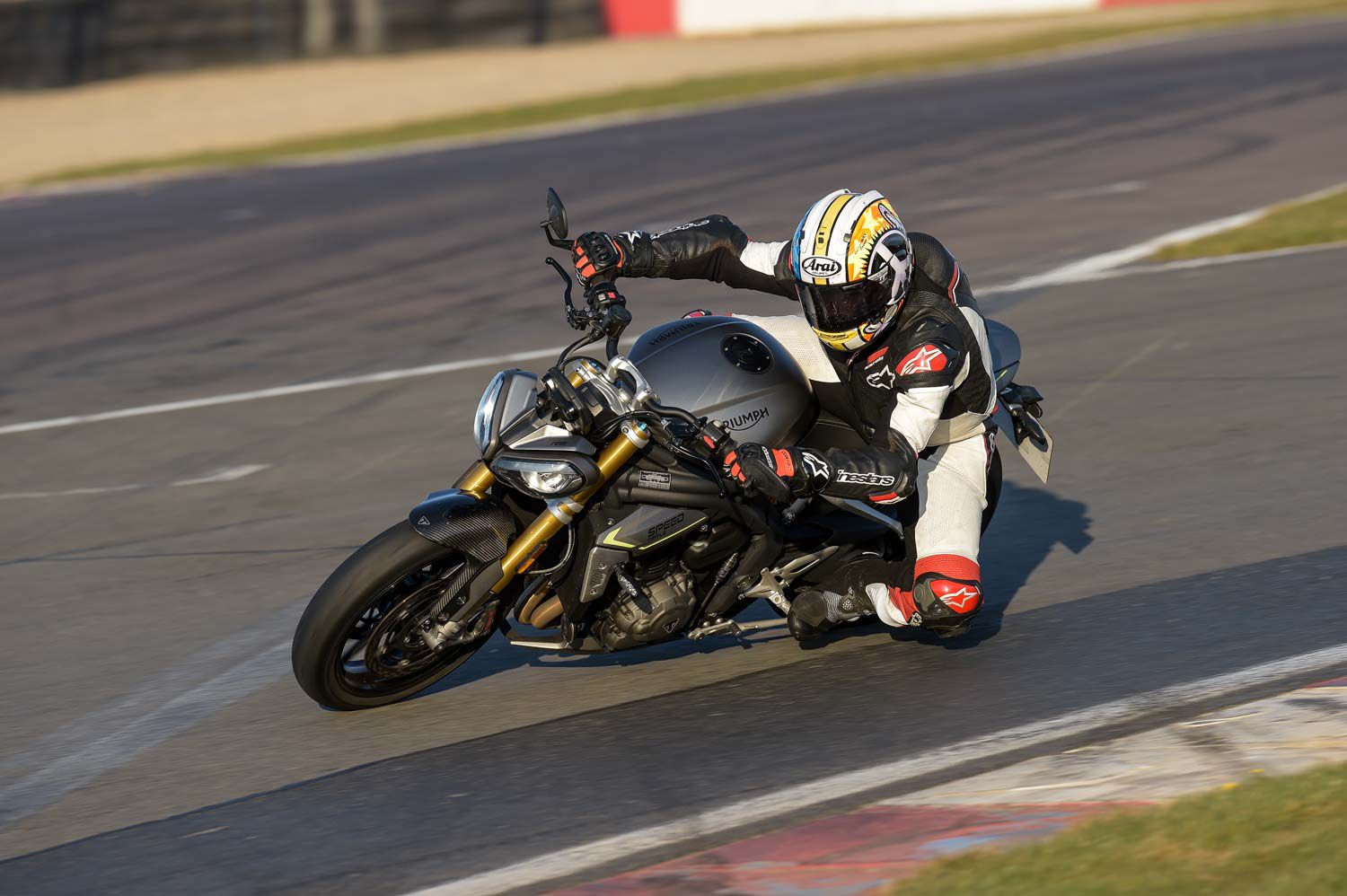
But ride more aggressively, and the fork appeared to like the extra forces and movement. Equally, when I brushed the extraordinarily strong new Brembo Stylema brakes, they were reassuringly controlled.
Related Content: Motorcycle Reviews and Comparisons
A new IMU controls the multiple electronic rider aids, and Triumph’s front wheel lift control. In the Road mode, wheelies are controlled smoothly, especially in the lower gears. Flick into Sport and the wheelie intervention is reduced; now the system allows a small rise depending on the gear. In higher gears, fourth and above, the system permits the front to rise smoothly over crests without savagely cutting the power. There is also the option to remove the rider aids should you wish.

Flicking between modes and changing the rider aids on the move did uncover a small objection: the usability of the stunning-looking clocks. The switch gear and clocks aren’t as intuitive as I would have anticipated. The data is clear but you must scroll into a menu, then into another menu… It takes time, which means I’m spending too many seconds looking at the dash and not the road ahead.
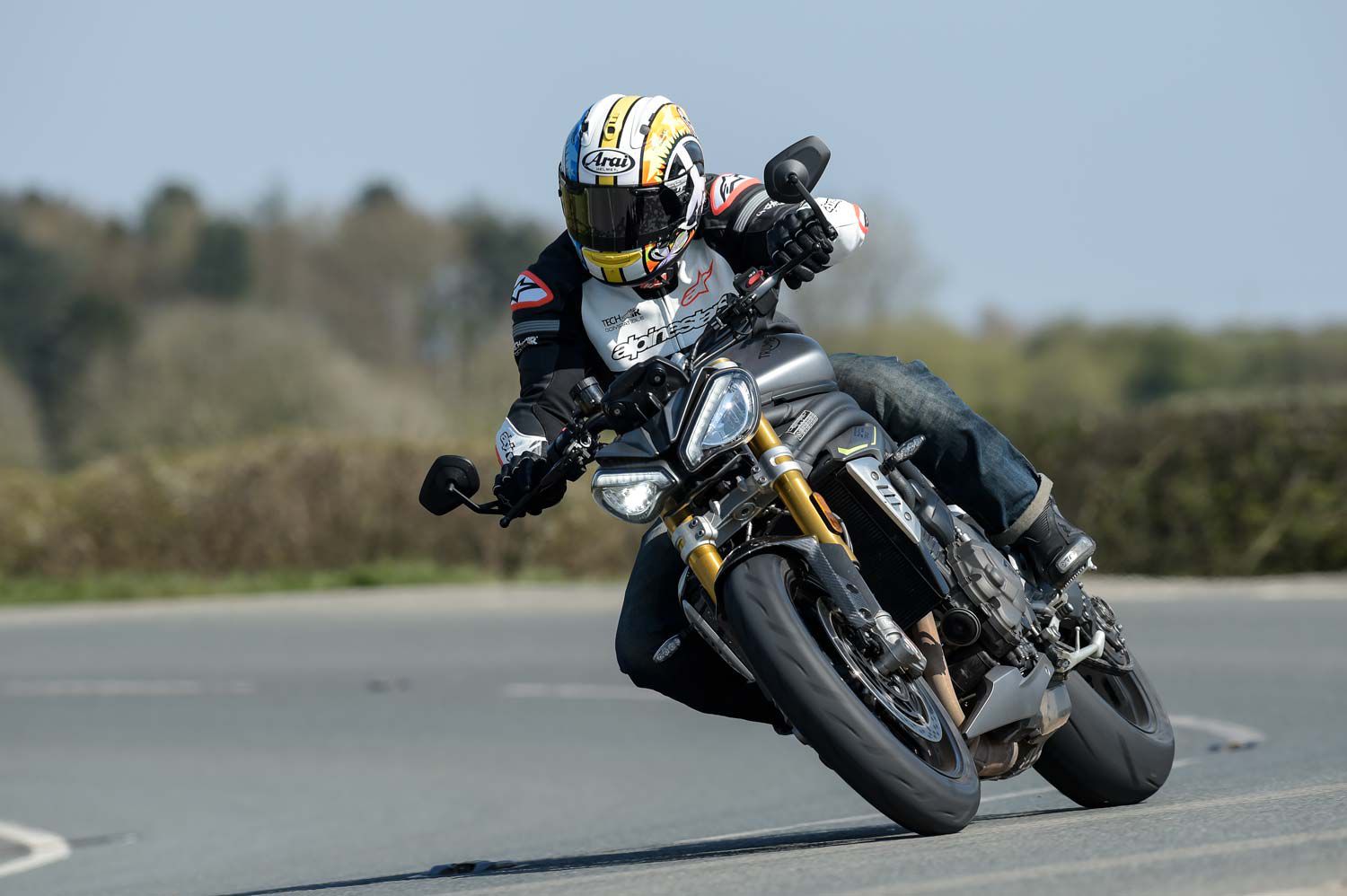
At the famous Donington Park racetrack, I had time to play and understand the dash and input my electronic settings for the track. On track it’s so quick. I thought I was opening the throttle fully on the road, just for a split second, but clearly, I wasn’t. The power is immense, and the RS pulls incredibly hard, meaning it takes physical effort to hold on when you are fully committed.
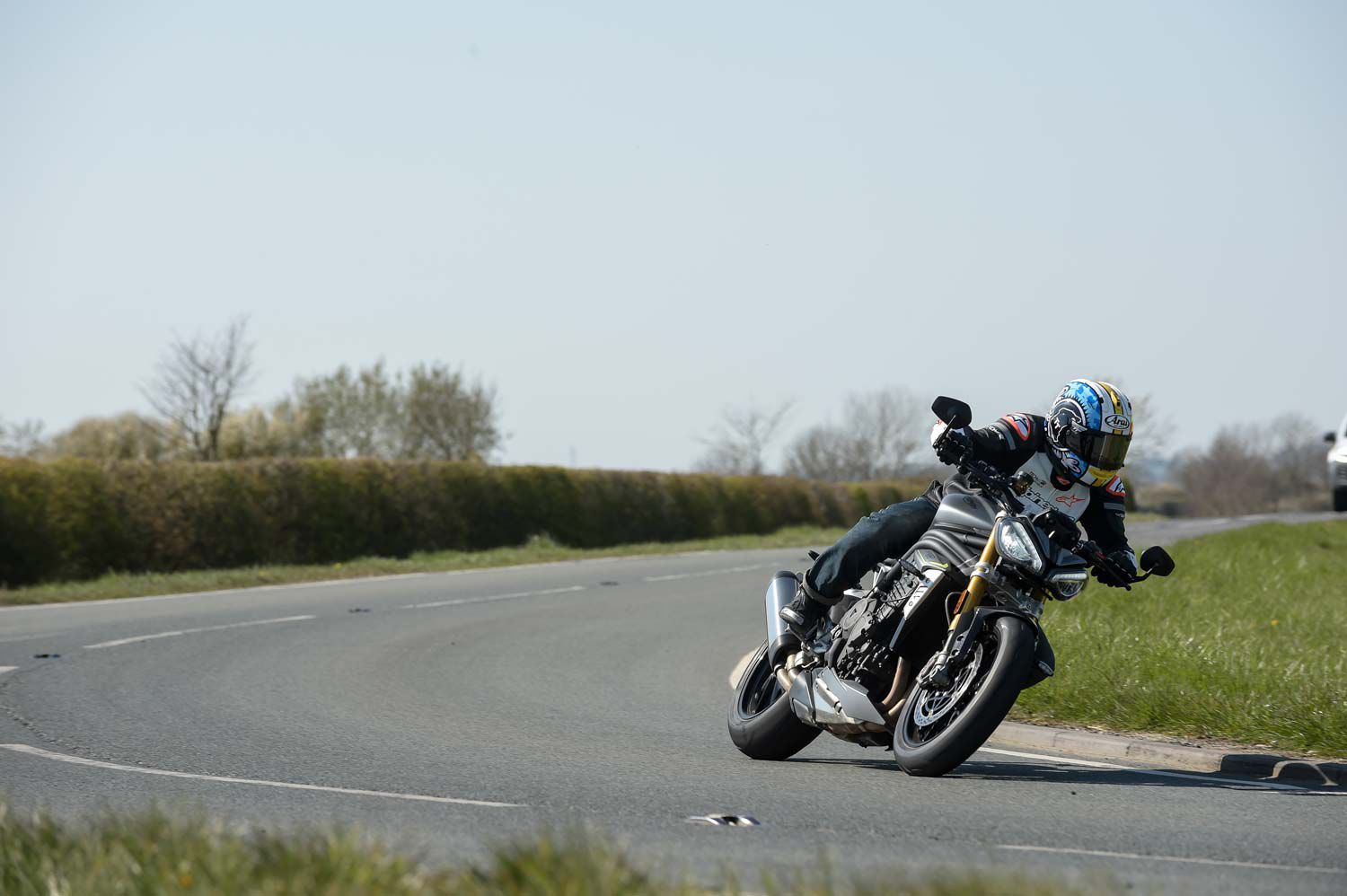
It’s only lap one, but my road-based opinion of the new Triumph has completely changed. Who cares if I can’t see the mpg. Each lap I’m recalibrating to take on the power output, while the previously unexplored top quarter of the rev range is a ginormous step over the old bike.
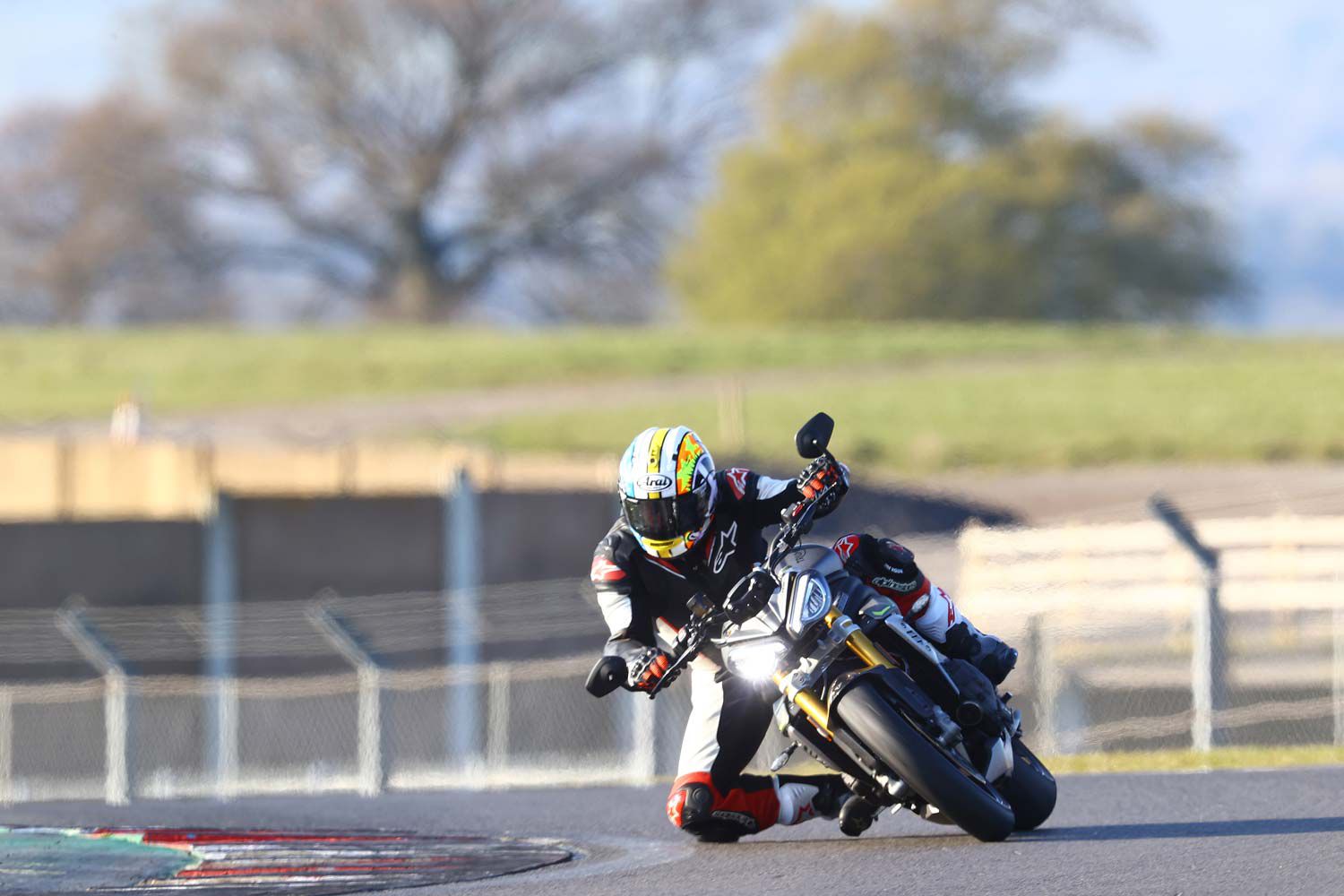
The fork, which felt on the firm side on the road, now works in harmony with the smooth but undulating Donington Park. Combine the sporty fork with Brembo’s latest brakes, not forgetting that newfound lightness, and the stopping power is incredible.
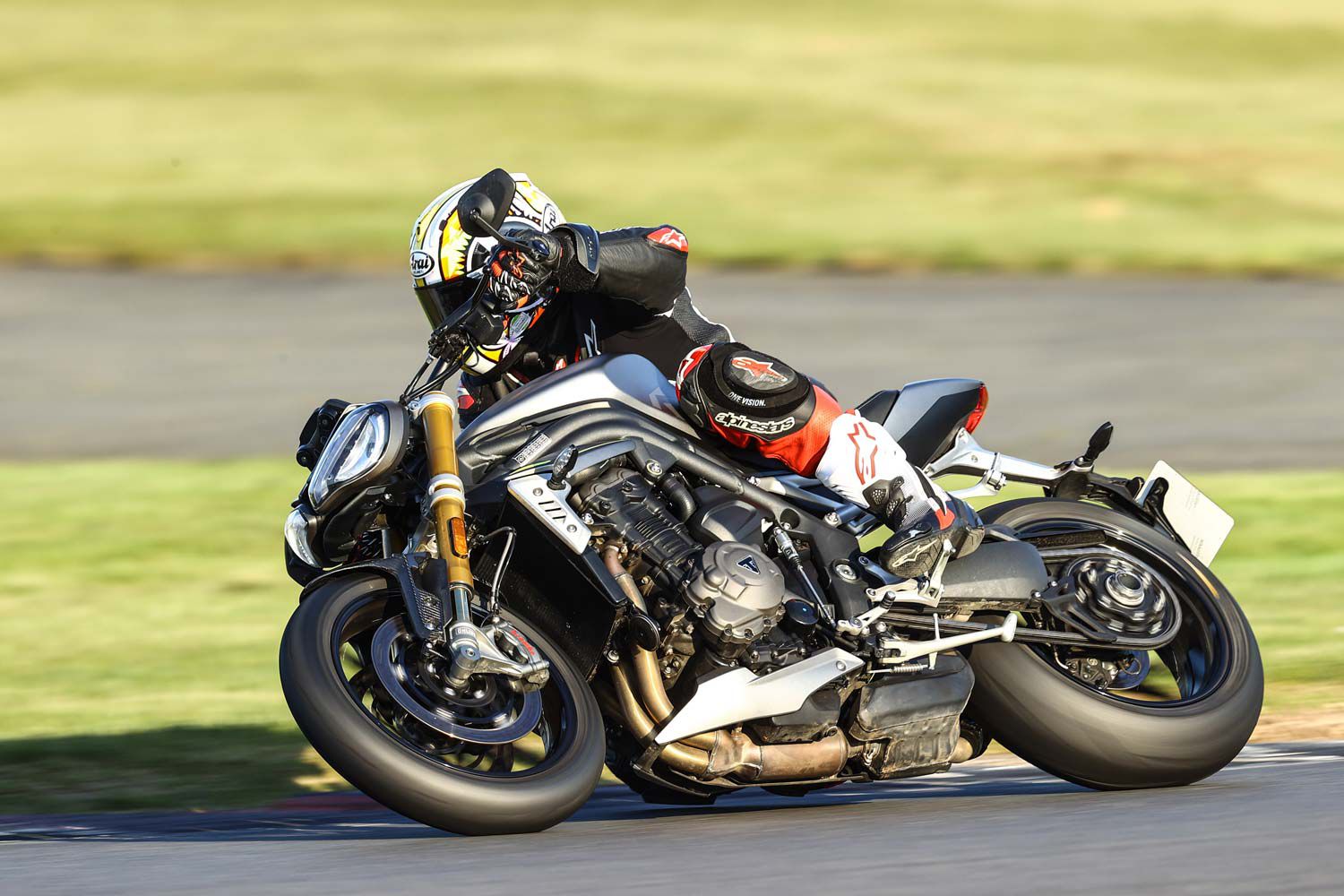
The first half-lap of Donington highlights how a bike steers at speed and holds a line. On the RS the line is accurate, its fluidity and ability to flick from one side to the other whilst maintaining stability quite superb.
However, as the pace and my confidence increased, the more the road-focused rear end felt too soft for my liking and weight, especially out of the Foggy Esses, resulting in a floating front end, an overly squatting rear, and the rider aids working overtime.
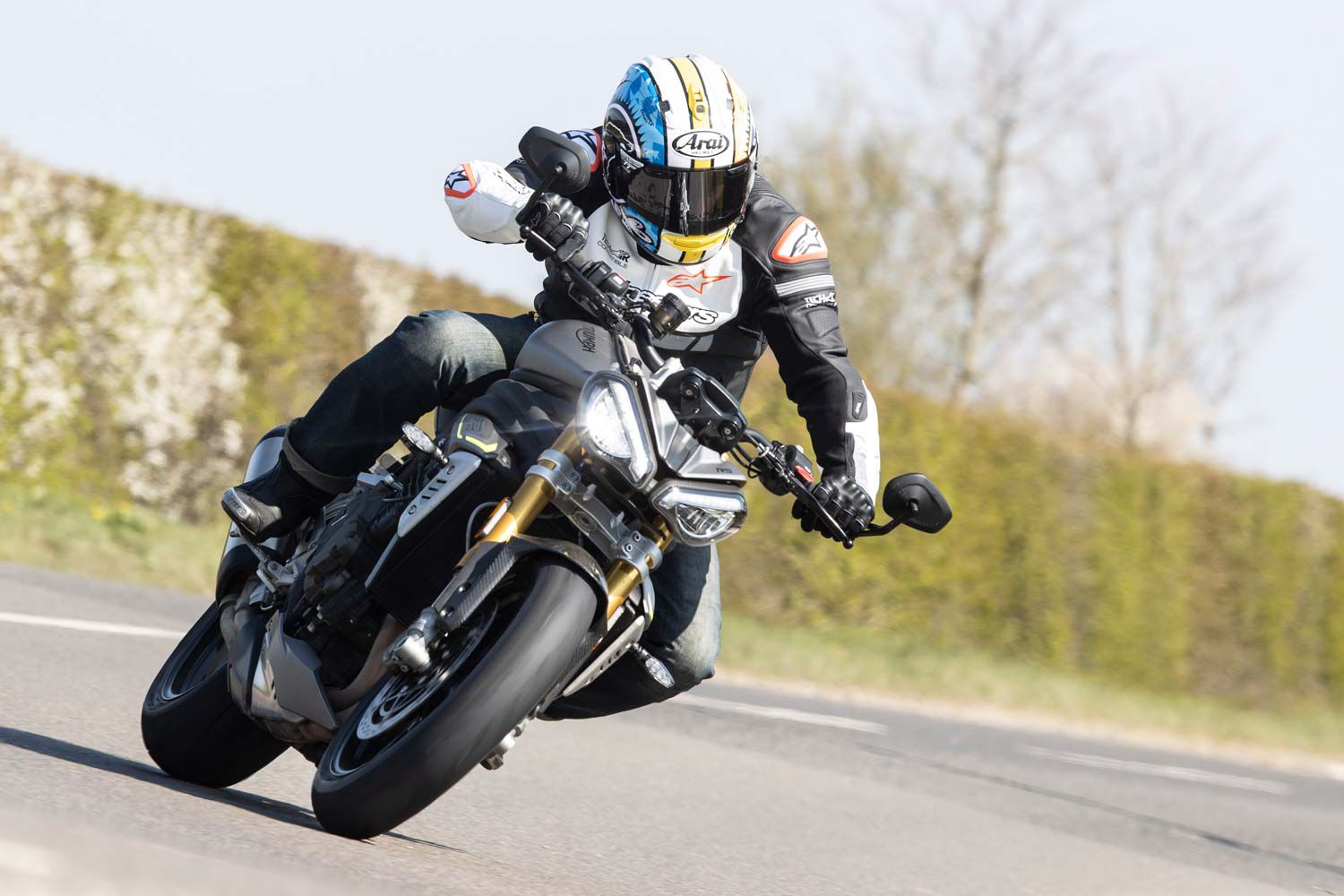
The Öhlins rear shock is easy to access; I left its preload adjuster alone, simply changing compression and rebound damping, which hugely improved the rear end, bringing it more in line with the sporty front. Now the electronics, rider, and rear tire were having an easier time, getting on the power sooner and harder, still with excellent feedback.
Tickling the adjusters showed the quality of the Öhlins units and their easy access. And several times I had to remind myself that I’d ridden from the road onto the track with the same Metzeler rubber. A few clicks of suspension and that was it, the RS transformed from a road bike to track tool.
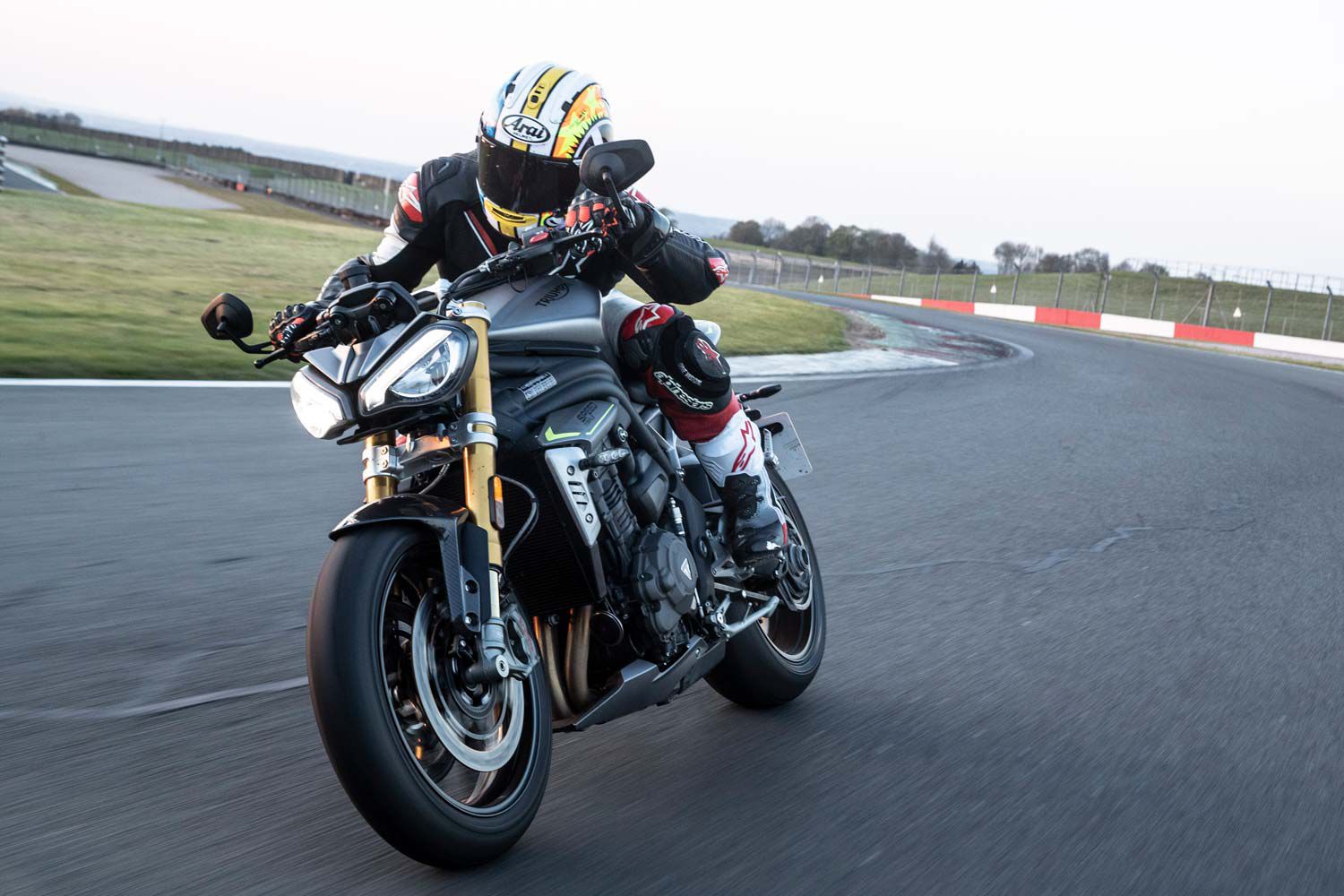
The rider aids that impressed me on the road continued to shine on the track. Inexperienced or those new to trackdays will discover that rider aids are invaluable, like riding with a guardian angel on your shoulder.
Verdict
I have a few gripes. The switch gear’s connection with the lovely looking TFT dash isn’t as intuitive as I’d expect, and the fork is a little harsh on the road, while the rear is a tad soft on the track. The older bike has a plush ride quality on the road that the new bike doesn’t have in stock trim.
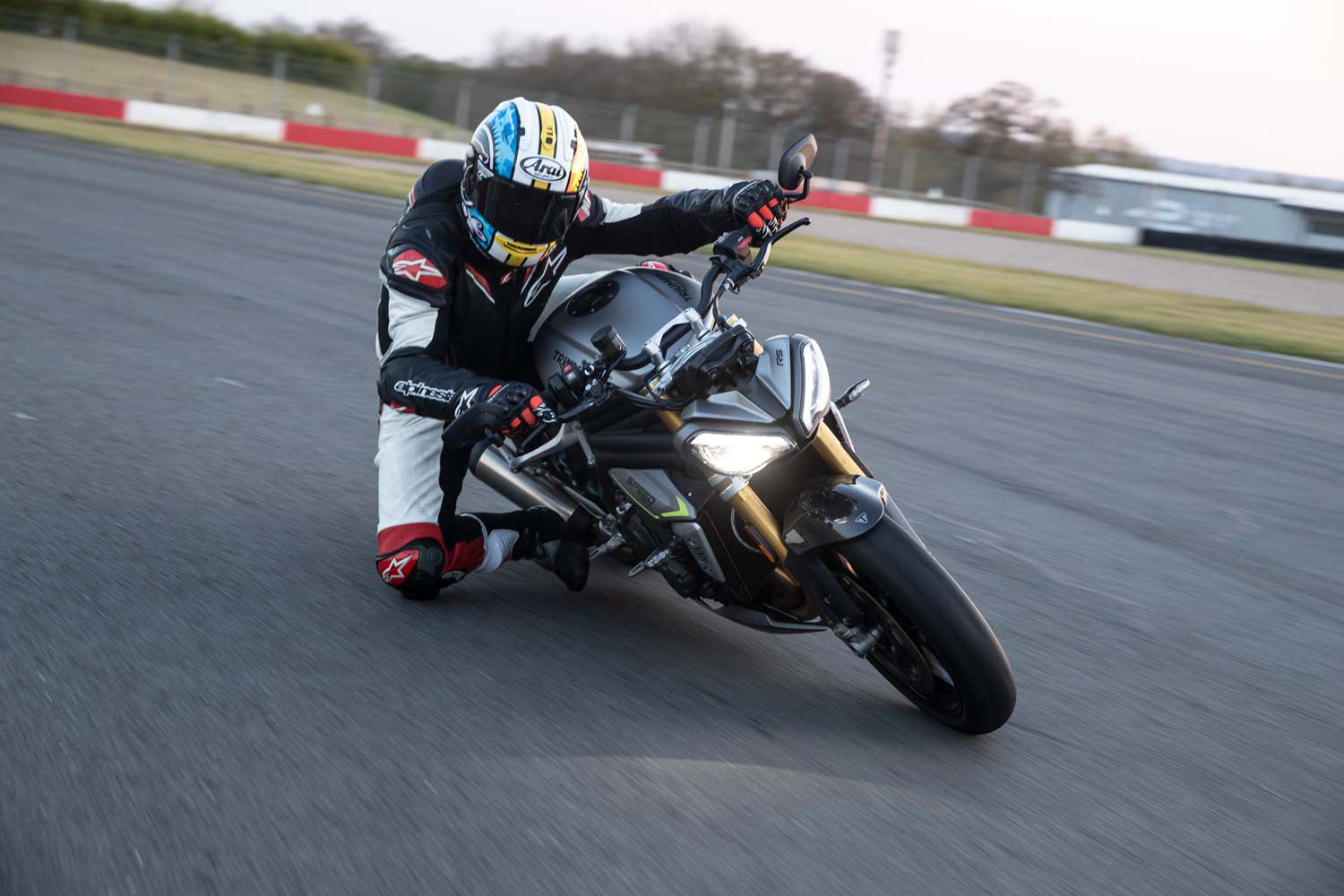
However, the suspension is fully adjustable and a few clicks make a significant difference, while, in time, RS owners will probably become fully familiar with the dash. The new Speed Triple 1200 RS takes a significant step beyond the old bike in terms of power, torque, electronics and rider aids, and looks, which we have only touched upon. The older 1050 Speed Triple still is a great road bike but lacks the excitement, performance, and technology of its rivals, but not the 1200 RS. Competitively priced, with a quality feel, refined electronics, and that unique triple soundtrack, this is the best Speed Triple to date.
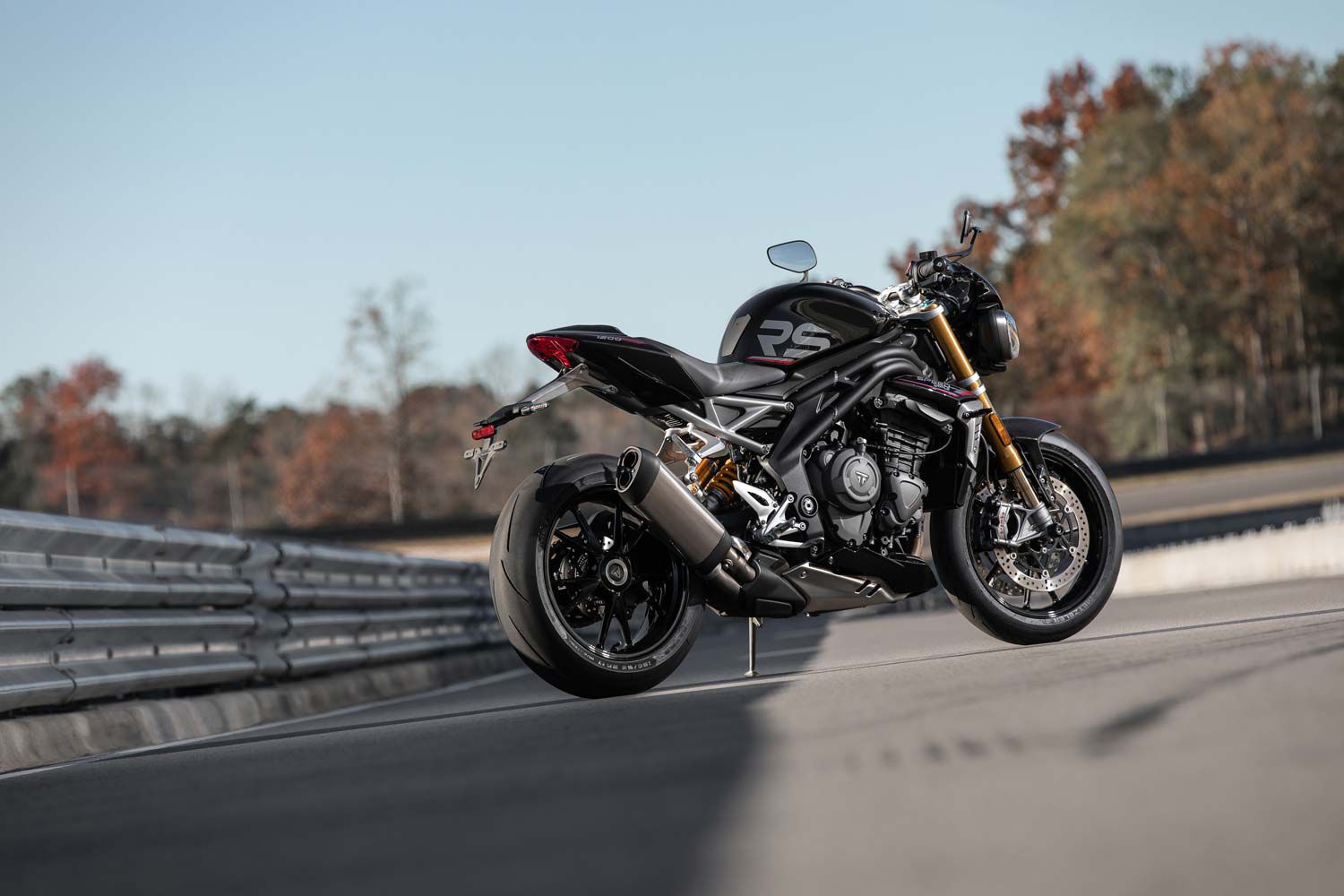
2021 Triumph Speed Triple 1200 RS Technical Specifications and Price
| PRICE | $18,300 |
| ENGINE | DOHC, liquid-cooled 3-cylinder; 4-valve/cyl. |
| DISPLACEMENT | 1,160cc |
| BORE x STROKE | 90.0 x 60.8mm |
| COMPRESSION RATIO | 13.2:1 |
| FUEL DELIVERY | Fuel injection, ride-by-wire |
| CLUTCH | Wet, multiplate slip |
| TRANSMISSION/FINAL DRIVE | 6-speed/chain |
| CLAIMED HORSEPOWER | 177.5 bhp @ 10,750 rpm |
| CLAIMED TORQUE | 92 lb.-ft. @ 9,000 rpm |
| FRAME | Aluminum twin spar |
| FRONT SUSPENSION | Öhlins NIX 30, fully adjustable 43mm USD fork; 4.7 in. travel |
| REAR SUSPENSION | Öhlins TTX 36 monoshock, fully adjustable; 4.7 in. travel |
| FRONT BRAKES | Radial Brembo Stylema 4-piston caliper, dual 320mm floating discs w/ Cornering ABS |
| REAR BRAKE | Brembo 2-piston caliper, 220mm disc w/ Cornering ABS |
| WHEELS, FRONT/REAR | Cast aluminum; 17 x 3.5 in. / 17 x 6.0 in. |
| TIRES, FRONT/REAR | Metzeler Racetec RR K3; 120/70-17 / 190/55-17 |
| RAKE/TRAIL | 23.9°/4.1 in. |
| WHEELBASE | 56.9 in. |
| SEAT HEIGHT | 32.7 in. |
| FUEL CAPACITY | 4.1 gal. |
| CLAIMED DRY WEIGHT | 437 lb. |
| WARRANTY | 2-year, unlimited mileage |
| AVAILABLE | May 2021 |
| CONTACT | triumphmotorcycles.com |
Source: MotorCyclistOnline.com
